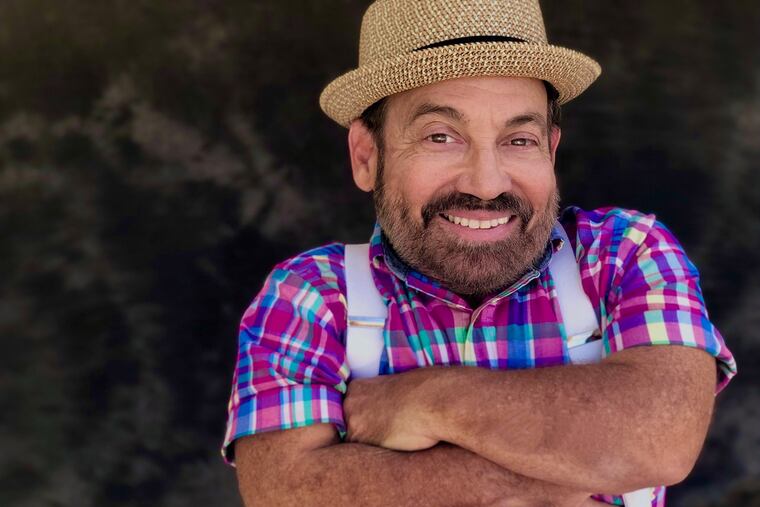What ‘Ted Lasso’ did for mental health, Hollywood should do for disability
You can’t expect a disabled actor to break down barriers if they aren’t hired for roles, or if film sets remain inaccessible.

Season three of the popular comedy Ted Lasso airs Wednesday, and given all that show has done to destigmatize mental health, I’m sure it’s no coincidence the finale is in May, the last day of Mental Health Awareness Month.
As a veteran actor, I am proud of what the show has done to elevate this important issue as it explores the title character’s panic attacks after years of bottling up trauma. But when it comes to on-screen representation, we are still so far behind.
I’m not just a veteran actor, who you may have seen on Seinfeld, along with more than 150 other TV shows and 30-plus films. I’m an actor with disability, which remains woefully underrepresented on screen.
A recent study of content from one streaming service found that disability remained the biggest representational hole, and fewer films included disabled characters in 2021 than in 2018.
When it comes to access and opportunity, we still often place the burden on the performers (people) with disabilities, and not on the system, access, laws, or the employers. And you can’t expect a disabled actor to break down barriers if they aren’t hired, or if film sets remain inaccessible.
Throughout my career, working with pioneers like disabled actor Robert David Hall (from CSI: Crime Scene Investigation), organizations such as the Ruderman Family Foundation and ADA Lead On (with Tari Hartman Squire), and festivals such as the ReelAbilities Film Festival, I have tried to change this — to eliminate prejudices, erase tropes, change the rhetoric, and ask that policies and creators include artists with disability.
Expanding Hollywood’s representation of disability isn’t just a moral imperative, it’s a business imperative. Roughly one out of four people in the U.S. lives with a disability; there is an immediate, positive response from audiences when we get this right. And negative consequences when we don’t.
It’s been more than 30 years since the passage of the Americans with Disabilities Act, and I can count on one hand the number of years our industry has attempted any serious engagement with the disability community.
Meanwhile, progress has been made in other areas — traditionally marginalized groups such as women, people of color, and LGBTQ people have been gaining equal opportunity and access to on-screen roles and the writers’ room, as well as producing and directing jobs.
To make the same changes with disability, the industry has to begin engaging with people and trying to eliminate fears and stigma.
Ted Lasso is one recent example, focusing attention on disabilities related to mental health. In another positive step, the popular IMDb database of actors has created a “self-identify” section, which lets all actors and craftspeople indicate if they have a disability. This will further help to reduce stigma by showing just how many of us are working with a disability.
» READ MORE: Bidens to host ‘Ted Lasso’ cast to promote mental health
Major changes won’t happen until studio executives make a true commitment to hiring more people with disabilities for their productions.
Not long ago, I met with my old costar, the wonderful actor Bryan Cranston, to discuss some of the backlash he received from the disabled community for his turn on The Upside, in which he played a quadriplegic man.
I said that our community — actors with disabilities — cannot achieve his level of success until we increase the opportunity and have equal access. So I’ve been asking him and other people in power to make a change to commit to casting three disabled actors in speaking roles each time they take a role from a disabled actor. Three to one. I call it the Woodburn Ratio. This would have the added benefit of forcing a production to make sets accessible.
I call it the Woodburn Ratio.
These are hard changes and may come with hard conversations. I tell studio executives that they shouldn’t worry about asking the wrong questions of disabled actors. Just ask them. Especially the most important question: “What do you need from us so that you can do your best work?”
Imagine if every leader asked that question in workplaces all across the country, and not just in Hollywood.
Danny Woodburn, a graduate of Abington High School and Temple University’s School of Communications and Theater, is perhaps best known for his role as Kramer’s friend Mickey Abbott on “Seinfeld.” He is a consultant to the National Organization on Disability.